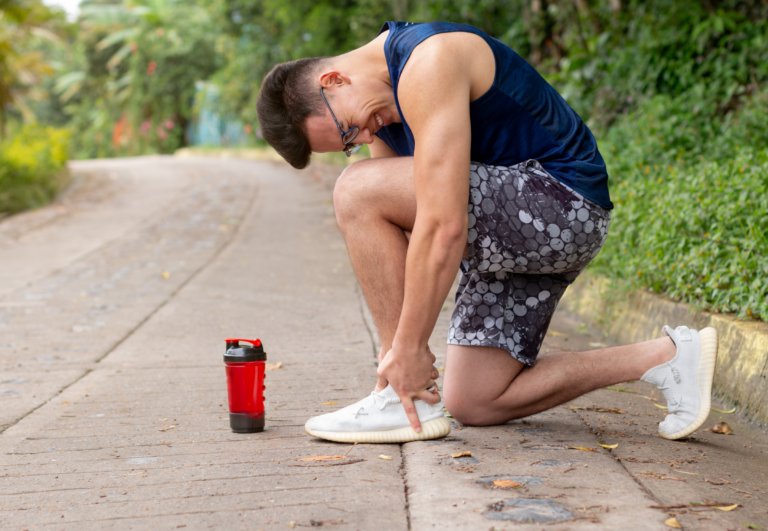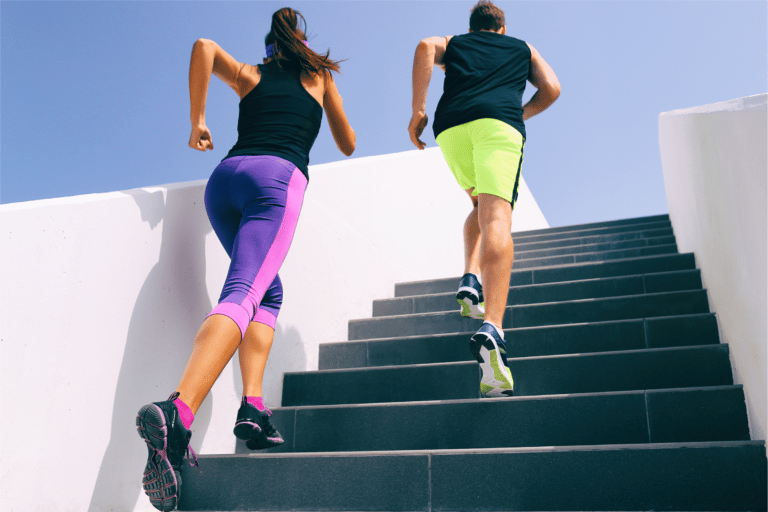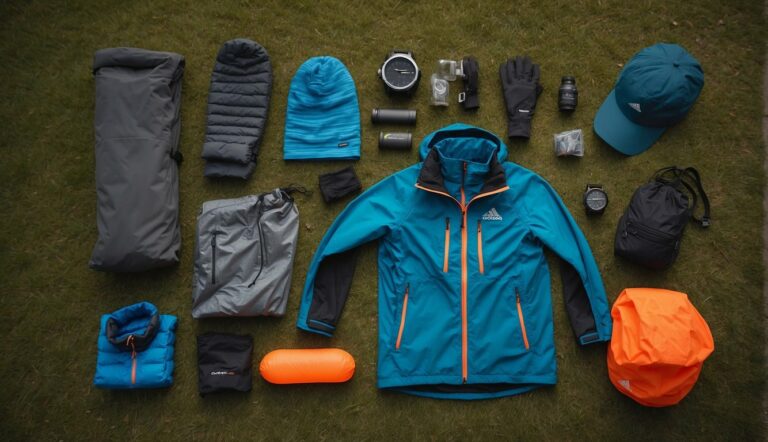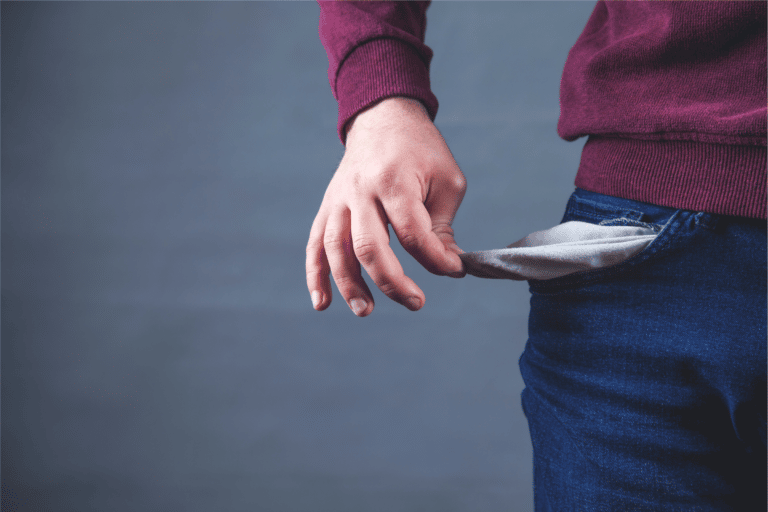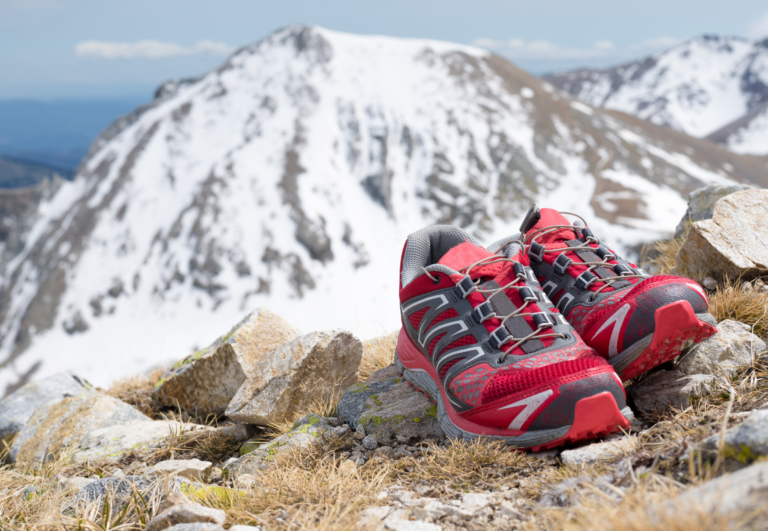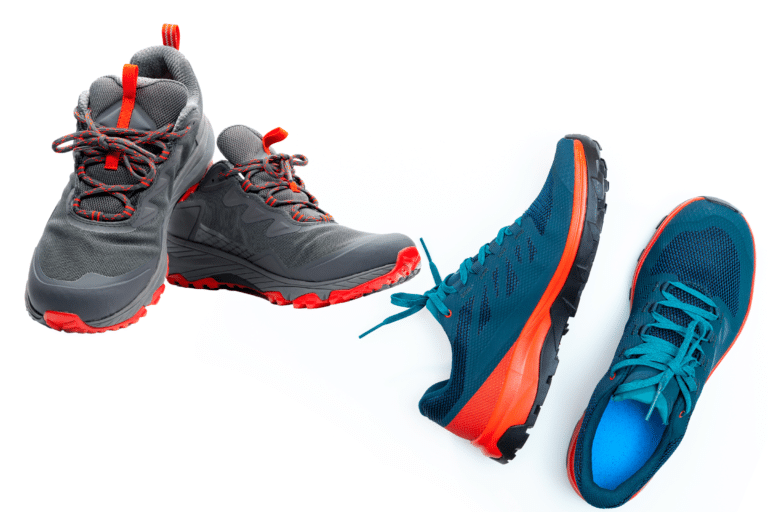Should You Get Fitted for Running Shoes? (With 4 FREE Places To Go!)
One of the greatest weapons at a runner’s disposal is his or her local running shop. If you’ve never been by, you’re missing out on a world of fun and high-quality gear. Better yet, local shops often offer diagnostic services for runners, such as analyzing footstrike. These services beg the question, should you get fitted for running shoes, or is it a waste of time?
Runners should get fitted for running shoes. It’s worth your time, even if you consider yourself a casual runner. Getting fitted for running shoes tells you about your feet (arch, width, length, etc.) and allows you to buy shoes accordingly. Most shops will also offer recommendations after conducting a free measurement.
Read on to learn about all the great reasons you should get fitted for running shoes, along with the best companies to get fitted by.
8 reasons you should get fitted for running shoes
As a beginning runner, shoes are just shoes. If they’re comfortable, great – that’s good enough. But as you dive deeper into the sport, your shoes become much more important.
With more miles comes more stress on your feet.
I cannot recommend going to get fitted for running shoes enough, and if you don’t believe me, here are 8 reasons to get fitted:
- Diagnose issues with current shoes
- Learn about your arch
- Insight into running gait
- Learn about foot dimensions (length and width)
- Learn about the symmetry of your feet
- Difference between shoes (barefoot vs. cushioned)
- Ability to test different shoes
- It’s free!
I started running in a budget pair of New Balance shoes a few years ago, but eventually, it pained me even to put them on. I had shin splints, and my feet would be sore for the next couple of days after the run.
I made the conscious decision to get fitted at my local running store; I got fitted and ended up purchasing a pair of Brooks.
The result?
No more pain.
But just because it worked for me doesn’t mean that this exact shoe will work for you – everyone’s feet are a little different!
Wondering what a shoe fitting entails? Watch this YouTube video, then keep reading for a complete breakdown of all the reasons you should get one!
Helps diagnose issues with current shoes
Sometimes, running shoes just need to be broken in to feel comfortable. Other times, the shoe simply isn’t the right match.
Getting fitted for running shoes can help runners diagnose the issues with their current running shoes.
Ill-fitting shoes can cause an array of problems, from blisters to shin splints to plantar fasciitis – the list goes on and on.
Getting fitted can help you gain insight as to why these things are happening. Maybe the toe box is too tight, or your feet are actually a little bit too wide for the shoe you’ve chosen.
Not only will diagnosing issues help with current shoes, but it will also help you make more appropriate purchases in the future, saving you some of that hard-earned cash.
Learn about your arch
Considering the arch of your foot is instrumental in buying a pair of well-fitting running shoes. No wonder we see frequent advertisements for insoles to match our arches!
Runners can learn about their foot arch by getting fitted for running shoes. Different shoes are best fit for certain arches; purchasing and running in shoes that do not accommodate your foot arch is sure to be a painful experience.
There are three different types of foot arches: normal arch, flat arch, and high arch. None is necessarily any better than the other, but it’s important to be informed.
Your arch plays an important role in the type of foot strikes you generate, which makes it another determining factor in the type of running shoes you need to purchase.
By knowing your foot arch, you can find comfortable and ergonomically appropriate shoes for your foot, avoiding pain while simultaneously boosting performance.
Insight into running gait
In a perfect world, all of us runners would have a perfect footstrike along with the perfect running form. However, as you’ll find out from your shoe-fitting, that’s simply not the case.
Getting fitted for running shoes can help runners gain insight into their running gait. Your running gait is synonymous with your footstrike, or the order in which your foot hits the ground and distributes stress.
Similar to how there are three different foot arches, there are three different running gaits. It just so happens that each foot arch coincides with a running gait.
While we won’t get into specifics, there is normal pronation, overpronation, and under pronation which can also be called supination.
Getting fitted often includes a gait analysis, which only increases the knowledge you need to pick the right running shoe for your running endeavors.
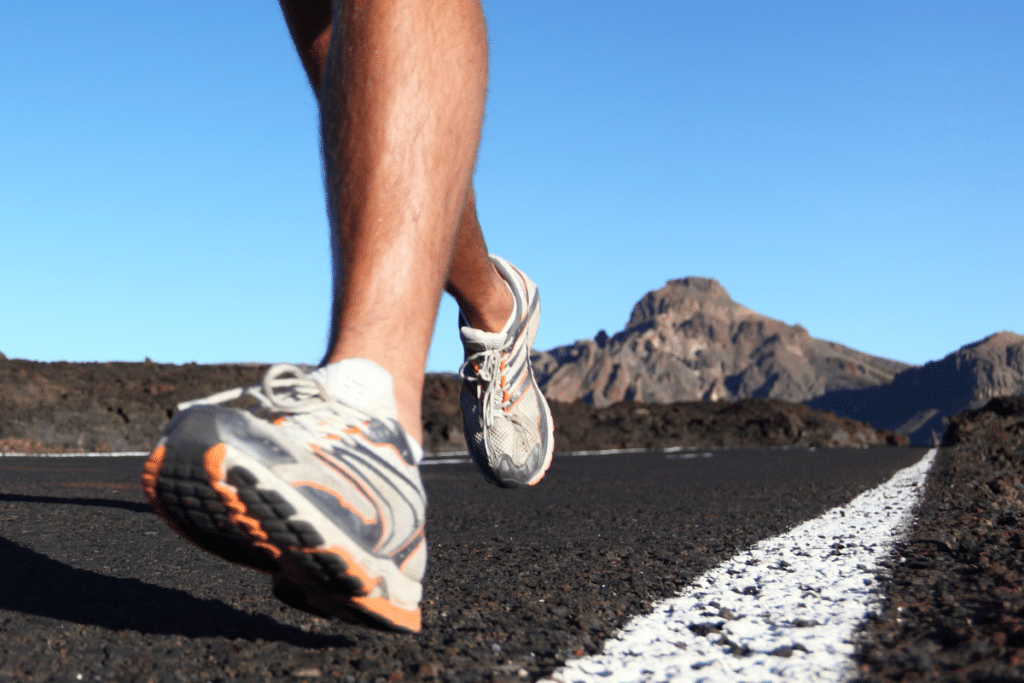
Learn about foot dimensions – how tight should running shoes fit?
Common knowledge is that your feet stop growing around the time that puberty ends. However, this may not be entirely true, and it is yet another reason to get fitted for running shoes.
Runners should get fitted for their shoes to gain more insight into the dimensions of their feet. Contrary to popular belief, your feet’ dimensions actually change over time, even after your feet are done growing. For this reason alone, runners should aim to get fitted every time they buy a new pair of running shoes.
Shoe size seems intuitive. Without measuring your feet, try enough shoes on, and eventually, you’ll find one that fits.
However, runners need to be more selective than this. Learning about the length and width of your feet is crucial to picking the right running shoes.
Over time, the feet wax and wane in size, and while it may be by a seemingly negligible amount, I promise it can make a world of difference. Factors that affect foot shape and size include age, weight, exercising or running, and possible health conditions.
Do yourself a favor and get down to the nitty-gritty details of your feet. They will thank you later.
Learn about the symmetry of feet – size and length charts
While our feet are typically about the same size and shape, it is certainly possible that there can be minor discrepancies between the two. It pays to know the differences.
Getting fitted for running shoes is great for learning about the symmetry of your feet. Runners can benefit from this by purchasing insoles for their shoes to compensate for differences in size or shape.
Having differently-sized feet is totally normal and nothing to fret about. For example, my right foot is a bit longer than my left.
However, this small difference can be exposed in runners. A slight misfitting of running shoes can lead to a world of pain and discomfort.
Getting fitted and learning about the sizing of your feet can help you compare one to the other. One may be bigger or wider than the other, and it’s entirely possible the arches may not be identical either.
Upon learning this information, runners can look into insoles to properly compensate.
The key thing is that you make sure the shoes you’re purchasing are a good fit for your feet. Some shoe manufacturers, such as Asics, have quizzes on their websites that can help you narrow down the types of shoes you’ll likely need. These quizzes can be helpful, but nothing can replace the personalization that comes from a free, in-person shoe fitting.
How to know when it’s time for new running shoes
In short, it’ll probably be very obvious… If you’re constantly experiencing foot pain, whether it’s concentrated in the arch, heels, or toes, or if you find yourself constantly dealing with shin splints, it’s probably time to go get fitted for new running shoes.
Aside from issues like the material falling apart or feeling jammed in too tightly to your sneakers, the tell-tale sign of a running shoe problem is runner discomfort and injury. Though running shoes can be quite an investment, I would highly encourage you to listen to your body in this case. It can be very dangerous to continue to train in inadequate running shoes. As soon as you start to develop pain and discomfort, go get your free fitting!
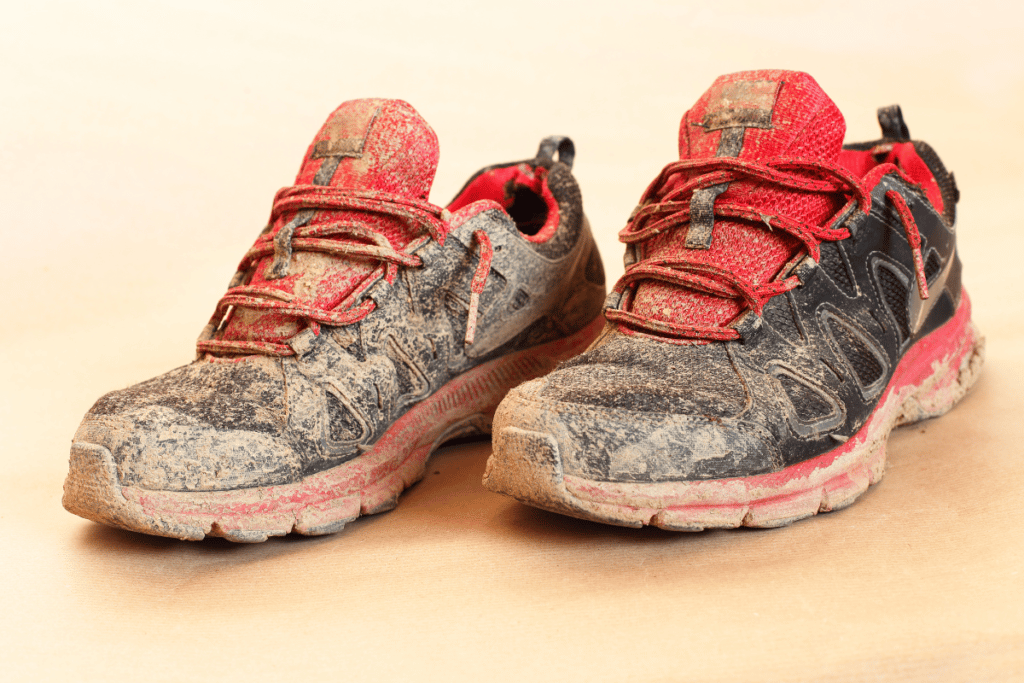
Difference between shoes (barefoot vs. cushioned)
Traversing the myriad of different types of running shoes can seem like an insurmountable challenge. Getting fitted can help runners overcome it.
Getting fitted for running shoes can be beneficial for learning about different styles and what may be best for you. The extreme ends of the spectrum are barefoot and ultra-cushioned running shoes; many runners fall somewhere on the middle of the spectrum in terms of what they need.
One of the greatest benefits of getting fitted for running shoes is that the people sizing you up and taking measurements are experts. They can take accurate data and know exactly how to interpret and analyze your measurements.
In other words, they are professionals capable of making expert recommendations.
Different foot types require different shoes that compensate for different pronation or supination patterns. Having an expert on hand to help make recommendations is indispensable.
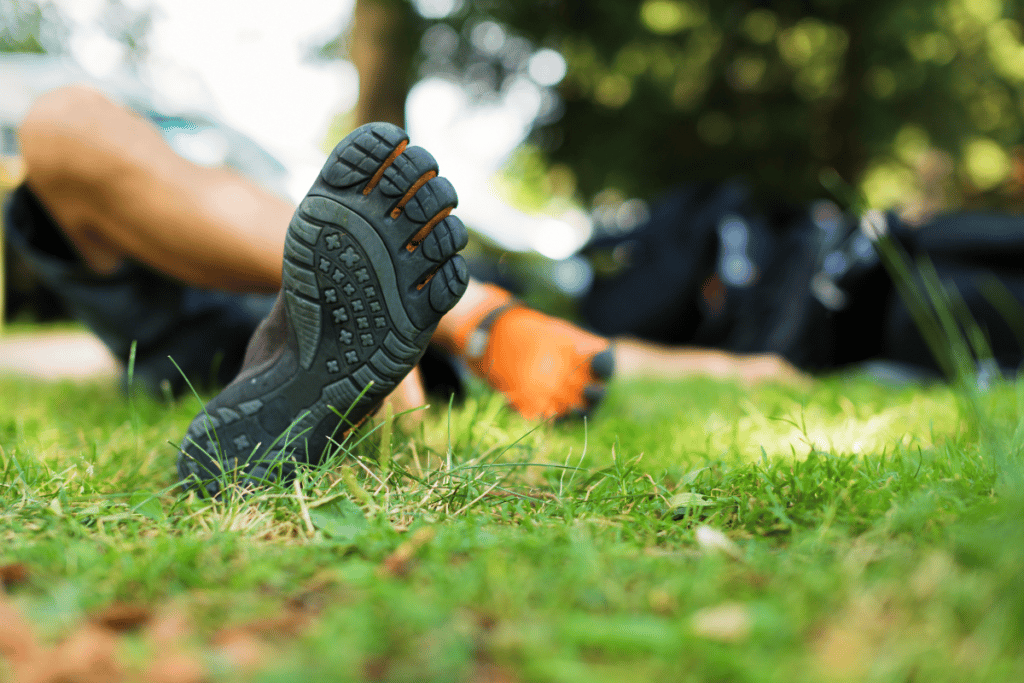
Ability to test different shoes
Just including large corporations, there are plenty of running brands and models to choose from for your footwear. Add in small companies, and the list only lengthens.
How are we supposed to know what we like? How can we find our favorites?
Getting fitted allows runners to try out different shoes and decide what their favorites are. Many running stores have treadmills used to experiment with different shoes when fitting runners.
There are two ways to find your favorite running shoe: the expensive way and then the not-so-expensive way.
The expensive way is to buy a ton of shoes, waste a ton of time trying them over the years, and even then, you may be dissatisfied.
The not-so-expensive way is to go get fitted at a running store. Running stores have a wide selection of shoes to try and a treadmill to test them on.
Best of all? It’s free.
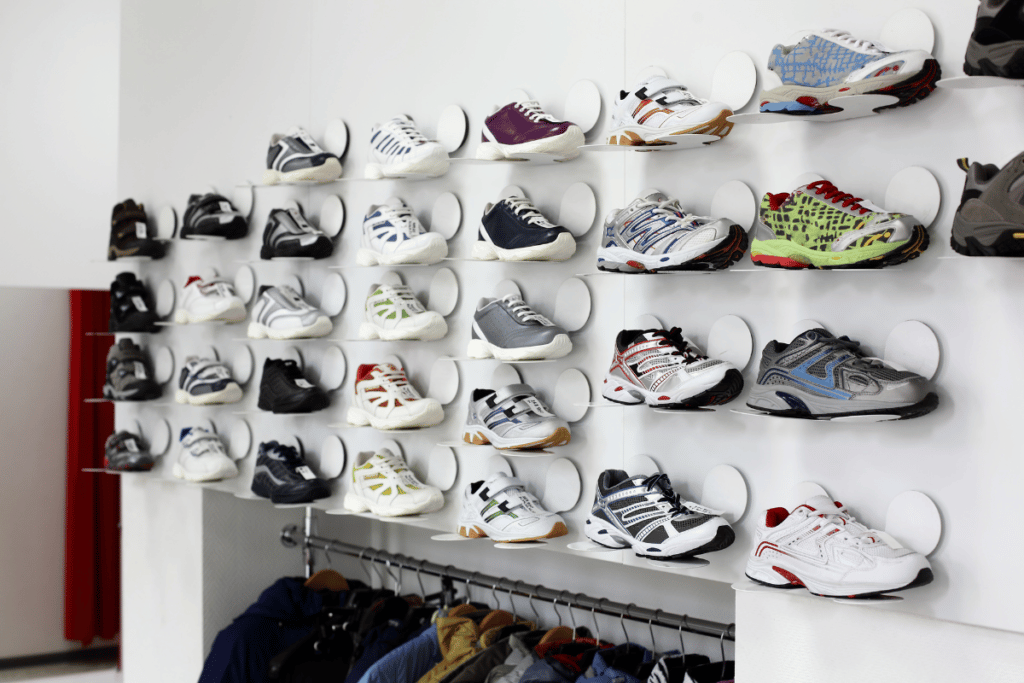
It’s free!
If there’s one thing I’ve learned in life, it’s that you never turn down free stuff!
Runners should get fitted for running shoes because it’s free! In other words, there’s no reason not to get fitted.
If getting fitted costs a large sum of money or required a long drive to the store, I could understand skipping the process and making a purchase on your own.
However, neither of these is usually the case. Getting fitted by a local running store is almost always a free service.
Think of all the benefits: you learn about your shoe size, your current shoe, and your arch, and they even give you personalized recommendations. All for the low price of zero dollars.
After reading this far, you may have “running shoes fitting near me” already typed into your browser. To save you the trouble, check out our list of 4 places that offer free fittings below!
4 places that fit running shoes for free
Now that you’re on board (I presume), where do you actually get fitted for running shoes?
There are many different options, but some of the most popular providers are:
- Fleet Feet
- Road Runner Sports
- The Running Well Store
- Your local running store!
Which one should you visit? Keep reading to find out!
Fleet Feet
One place you could consider getting fitted for running shoes is Fleet Feet.
Fleet Feet does fitting through high-tech 3D scanning that records the dimensions of the foot and the pressure points to determine gait. Fleet Feet’s outfitters will then make recommendations and let runners try different shoes.
Fleet Feet uses 3D foot-scanning technology to create a comprehensive profile of every runner who comes into the store to get tested.
From the scan, outfitters will have the measurements for your feet, along with various pressure points to help determine your running gait.
From here, their expert employees are capable of making tailored recommendations to you based on your scans.
Fleet Feet carries many different HOKA and Brooks models, so definitely get fitted here if you already have a preference for those brands.
Road Runner Sports
Road Runner Sports is another great brand that is capable of providing high-quality testing for running shoes.
Road Runner Sports performs measurements through a 3D foot scanner; this gets paired with a treadmill analysis for running gait. They also offer complete customization of your insoles to achieve the perfect fit.
While maybe not quite as high-tech as Fleet Feet, Road Runner Sports is a reliable place to get fitted.
Their evaluation begins with a questionnaire to uncover current issues, which is later followed by a 3D foot scan and a treadmill analysis.
What’s special about Road Runner Sports is the ability to customize your insoles. Better yet, they’ll save your foot scan in the system for the next time you need a new pair!
Road Runner Sports carries a variety of brands like Asics, Brooks, New Balance, etc.
The Running Well Store
For the best stride analysis, find The Running Well Store near you.
The Running Well Store performs stride analysis to inspect biomechanics that must be considered when buying new running shoes. They use a treadmill test paired with slow-motion video for full analysis.
This diagnostic test starts with a treadmill analysis to determine running gait. Upon slow-motion analysis with an expert, The Running Well Store can make recommendations best suited for you.
The Running Well Store makes a great guarantee: if you don’t like the shoes after 30 days, you’re welcome to return them for exchange or store credit.
Their store carries lots of Brooks models, but there are a wide variety of brands to choose from outside of that.
Your local running store!
If you’re anything like me, you’ll find going to support a local, small business is your best choice.
Your local running store, more likely than not, provides great shoe-fitting services. While it may not be as high-tech as bigger brands, local running stores can often provide analysis of the same caliber.
I love frequenting my local running store; everyone is so friendly and down-to-earth.
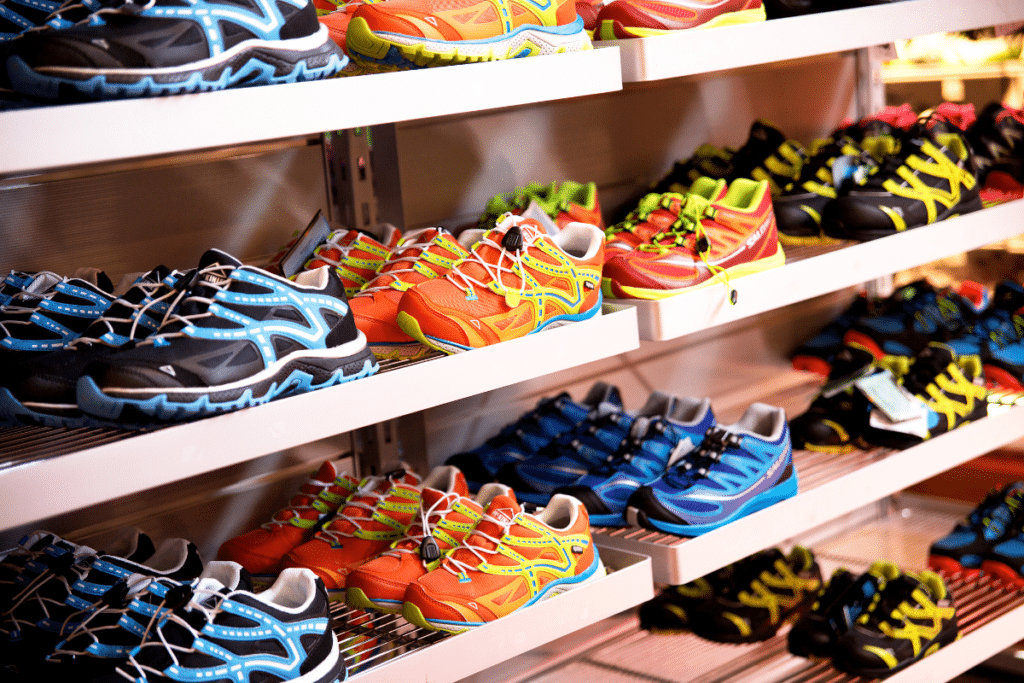
While I obviously cannot tell you exactly what store to go to, most local running stores provide analysis of some sort. A simple Google search should provide you with the results you need.
The one nearest me does manual fitting paired with treadmill analysis.
Most small running stores also have a wide variety of brands to choose from.
Plus, local running stores LOVE to help new or even experienced runners!
Should you get fitted for running shoes?
Of course! Getting fitted for running shoes can help you find a pair of shoes that lasts longer and keeps you from getting injured while running. And it’s free!
Where can I get fitted for running shoes?
You can get fitted for running shoes at any of the following shops: Fleet Feet, Road Runner Sports, The Running Well store, and even at most of your local running stores!
What’s the benefit of getting fitted for running shoes?
A foot scan and running shoe fitting can reveal discrepancies in the symmetry of your feet, and it can help determine the way your foot strikes the pavement when you run. This will allow you to pick the shoe that best fits your feet’s needs.

